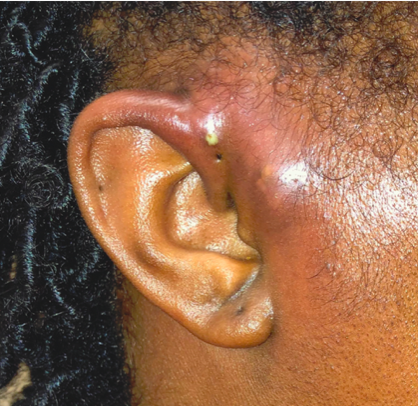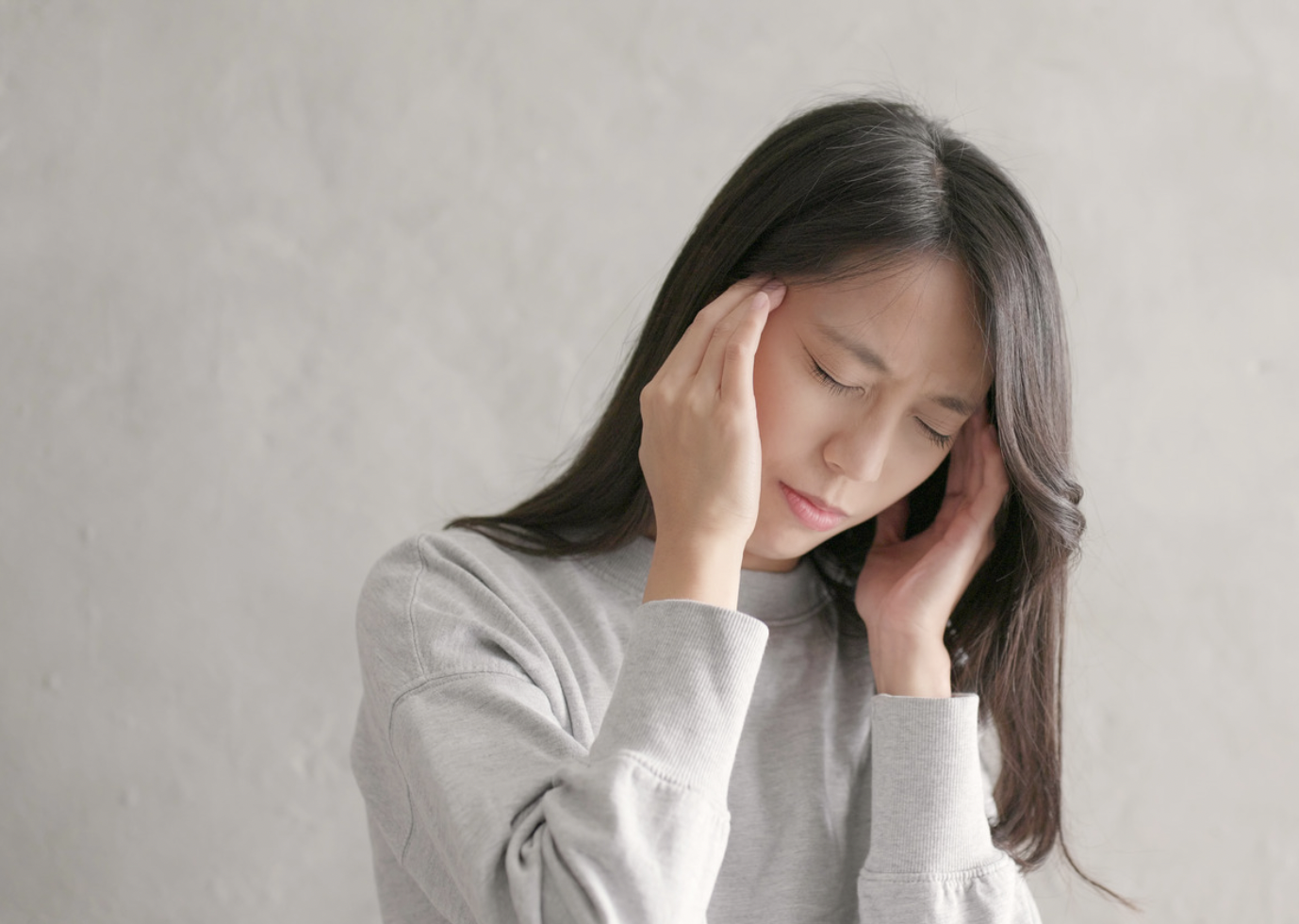Definisi
Trauma aurikular adalah trauma atau cedera yang terjadi pada aurikula (daun telinga). Macam-macam jenis cedera pada daun telinga adalah memar, luka robek, lepasnya bagian telinga, atau patah tulang. Trauma aurikular termasuk jenis cedera yang umum dijumpai karena telinga merupakan struktur yang rentan mengalami cedera, karena posisi telinga cukup terpapar dengan lingkungan luar. Trauma aurikular sering terjadi bersamaan dengan trauma lainnya, contohnya cedera pada wajah dan kepala. Cedera yang terjadi pada telinga dapat menimbulkan berbagai macam keluhan, mulai dari nyeri, perdarahan, sampai gangguan pendengaran.
Penyebab
Telinga dibagi menjadi 3 bagian yaitu telinga luar, tengah, dan dalam. Telinga luar terdiri dari daun telinga dan liang telinga. Daun telinga terdiri dari tulang rawan yang elastis dan dilapisi oleh kulit serta jaringan penyambung. Penyebab cedera pada daun telinga dibagi berdasarkan jenis cedera yang terjadi.
1. Memar Daun Telinga (Hematoma Subperikondrial)
Memar telinga merupakan jenis cedera yang umum terjadi setelah terjadi pukulan atau benturan pada daun telinga. Cedera akibat benda tumpul pada daun telinga dapat menyebabkan memar. Terjadi penumpukan darah dalam jumlah banyak di luar pembuluh darah, berlokasi di antara selubung tulang rawan (perikondrium) dengan tulang rawan. Selubung tulang rawan ini menyuplai darah dan nutrisi ke tulang rawan telinga, sehingga penumpukan darah pada selubung ini dapat mengganggu aliran darah ke tulang rawan. Suplai darah yang diberikan mengandung oksigen untuk kelangsungan hidup jaringan. Oleh karena itu, bila aliran darah terus terganggu, jaringan tidak akan mendapat oksigen dan bisa mengalami kematian.
2. Robekan Daun Telinga
Trauma ini dapat terjadi akibat benda tajam maupun tumpul. Kecelakaan lalu lintas, luka tembak, dan gigitan manusia atau hewan merupakan penyebab yang umum dari robekan daun telinga.
3. Avulsi (Lepas) Daun Telinga
Cedera benda tajam dapat menyebabkan avulsi atau lepasnya daun telinga. Kondisi ini bisa terjadi pada sebagian daun telinga sampai seluruh telinga.
Faktor Risiko
Trauma aurikular lebih sering ditemukan pada pegulat, petinju, dan pemain rugby. Olahraga ini berisiko tinggi untuk menimbulkan trauma atau cedera, terutama pada telinga, bagian tubuh manusia yang terekspos ke lingkungan luar.
Gejala
Tanda dan gejala yang dapat muncul pada cedera daun telinga antara lain:
- Nyeri telinga ringan sampai berat
- Pusing
- Sakit kepala
- Daun telinga terlihat besar, bengkak, dan berwarna merah keunguan
- Luka robek pada daun telinga
- Daun telinga lepas sebagian atau seluruhnya
Diagnosis
Diagnosis trauma aurikular ditegakkan dengan adanya riwayat cedera dan mengidentifikasi tipe cedera yang terlihat. Setelah cedera tertangani, dokter akan melakukan pemeriksaan telinga, hidung, dan tenggorokan secara menyeluruh. Oleh karena trauma telinga sering terjadi bersamaan dengan trauma lain, terutama pada kepala, maka dokter mungkin juga akan melakukan pemeriksaan penunjang seperti CT scan jika terdapat indikasi.
Tata Laksana
Terapi untuk trauma aurikular bervariasi, bergantung pada tipe cedera yang terjadi.
1. Memar Daun Telinga
Pada memar daun telinga, terapi yang dibutuhkan adalah segera mengeluarkan gumpalan darah dengan menyedot menggunakan jarum suntik atau membuat sayatan di daun telinga. Pengeluaran darah melalui sayatan lebih direkomendasikan untuk memastikan tidak ada gumpalan darah yang tersisa.
Terkadang pada orang yang baru datang ke fasilitas kesehatan lebih dari 6 jam setelah trauma, darah sudah menggumpal sehingga tidak dapat disedot dengan jarum dan harus dikeluarkan dengan sayatan. Oleh karena tulang rawan lebih rentan infeksi akibat kurangnya aliran darah, maka pengeluaran darah ini harus dilakukan dalam 24 jam setelah trauma. Setelah itu, dilakukan penjahitan dan penekanan pada bekas sayatan menggunakan perban untuk mencegah darah kembali menumpuk dan membantu perlekatan tulang rawan dengan selubungnya.
Selain itu, perban juga membantu tulang rawan untuk berada dalam posisi normalnya sehingga darah bisa mencapai tulang rawan kembali. Perban ini akan terpasang selama 3 sampai 7 hari. Jika memar kembali terjadi, maka prosedur yang sama akan diulangi. Jenis cedera ini rentan terkena infeksi bakteri dan pembentukan abses (kumpulan nanah), maka pemberian antibiotik diperlukan setelah penjahitan luka.
2. Robekan Daun Telinga
Pada robekan daun telinga, perlu dilakukan pembersihan pada kulit telinga, dilakukan penjahitan sesuai keadaan luka. Jika tulang rawan telinga juga turut terluka, maka penjahitan harus dilakukan secara hati-hati dan tidak mengenai pembuluh darah telinga. Setelah itu, perlu dilakukan pemasangan splint atau bidai, serta pemasangan perban untuk membantu pemulihan tulang rawan. Antibiotik minum juga diperlukan, sama halnya dengan memar telinga.
Luka telinga akibat gigitan memiliki risiko tinggi untuk infeksi, termasuk infeksi pada tulang rawan yang dapat menyebabkan komplikasi serius. Jika terdapat luka gigitan, maka diperlukan pencucian luka yang agresif, termasuk pembersihan jaringan yang sudah mati. Bisa diberikan antibiotik dan vaksin tetanus.
3. Avulsi (Lepas) Daun Telinga
Pada avulsi atau lepasnya bagian daun telinga, maka akan dilakukan operasi rekonstruksi atau perbaikan daun telinga mendekati bentuk asalnya oleh dokter spesialis THT atau bedah plastik. Operasi dilakukan untuk menyambungkan kembali bagian telinga yang lepas, namun tidak semua operasi berhasil. Terkadang, pada prosedur operasi dapat digunakan tulang rawan dan kulit dari bagian tubuh lain atau menggunakan kulit artifisial untuk merekonstruksi telinga baru.
Komplikasi
Memar pada daerah tulang rawan dapat mengganggu aliran darah ke tulang rawan. Jika hal ini tidak ditangani dengan segera, dapat terjadi infeksi, kerusakan/kematian, atau kehilangan pada tulang rawan. Selain itu, penumpukan darah akan memicu pertumbuhan jaringan tulang rawan yang asimetris dan tidak normal, sehingga menimbulkan bentuk telinga yang khas yaitu seperti kembang kol (cauliflower ear). Pada trauma yang berulang dan telinga kembang kol yang sudah kronis, dapat terjadi sumbatan pada liang telinga sehingga mengganggu pendengaran. Jika sudah terjadi telinga kembang kol, rekonstruksi sering tidak berhasil karena sudah terjadi gangguan suplai darah dan gangguan pertumbuhan tulang rawan.
Luka gigitan pada telinga, terutama yang mengenai tulang rawan, dapat menimbulkan infeksi yang dapat berujung pada komplikasi serius.
Pencegahan
Anda mungkin tidak dapat mencegah semua tipe trauma telinga. untuk menurunkan risiko trauma telinga, perhatikanlah telinga Anda dengan baik, dengan cara:
- Memakai hem saat berkendara
- Memakai alat pelindung saat sedang melakukan olahraga yang berisiko seperti tinju, rugby, atau gulat
Kapan Harus ke Dokter?
Anda sebaiknya segera ke dokter jika mengalami trauma pada telinga, baik itu memar, robek maupun avulsi karena membutuhkan penanganan dengan cepat untuk mencegah komplikasi dan infeksi.
Oleh karena trauma telinga bisa disertai trauma kepala, maka Anda juga harus segera ke dokter jika terdapat tanda trauma kepala seperti:
- Aliran darah atau cairan bening dari telinga
- Kebingungan
- Nyeri telinga atau kepala hebat
- Penurunan pendengaran, rasa melayag atau hilang keseimbangan yang mendadak
- Muntah tanpa disertai mual
Trauma telinga dapat bersifat ringan sampai mengancam nyawa. Gejala trauma kepala merupakan tanda dari kondisi medis yang serius, terutama jika terjadi setelah pukulan ke kepala, jatuh, atau kecelakaan serius lainnya.
Mau tahu lebih lanjut seputar penyakit-penyakit lainnya? Cek di sini, ya!
- dr Hanifa Rahma
External Ear Trauma - Injuries; Poisoning - MSD Manual Professional Edition. MSD Manual Professional Edition. (2022). Retrieved 9 March 2022, from https://www.msdmanuals.com/professional/injuries-poisoning/facial-trauma/external-ear-trauma.
Binasss.sa.cr. (2022). Retrieved 9 March 2022, from https://www.binasss.sa.cr/jul/52.pdf.
Ear Injuries and Trauma. Cleveland Clinic. (2022). Retrieved 9 March 2022, from https://my.clevelandclinic.org/health/diseases/17574-ear-injuries-and-trauma.












